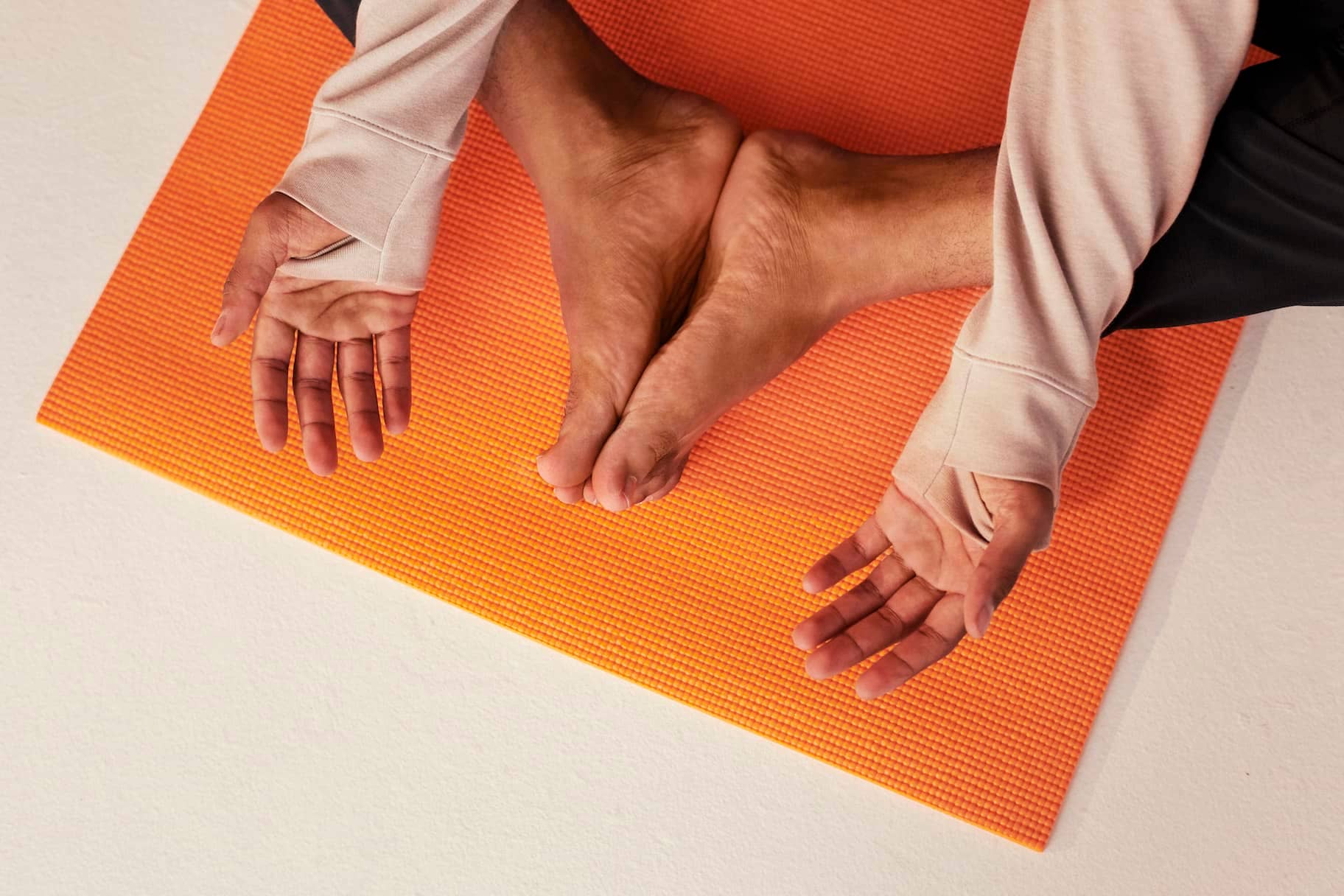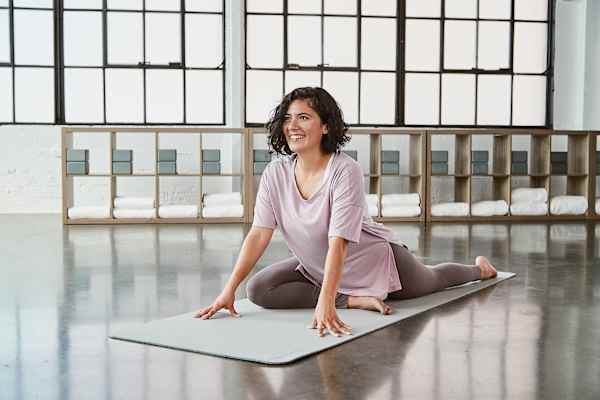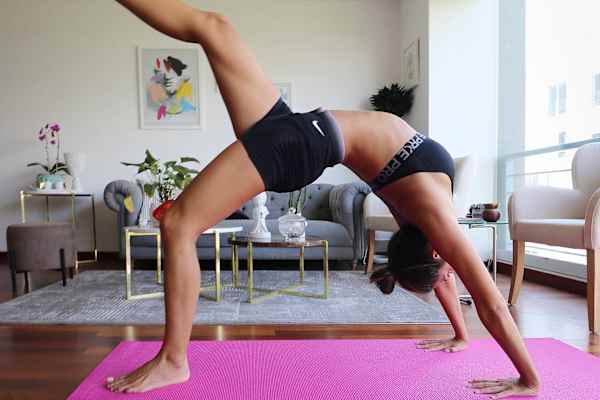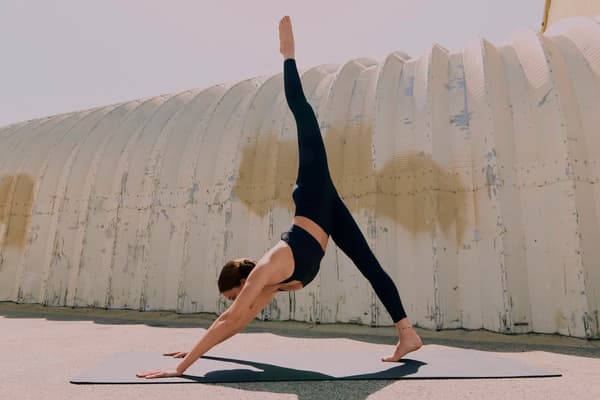28 Reasons to Start Doing Yoga Today
Sports & Activity
What are the key benefits of yoga? Better strength, flexibility, balance, recovery, and stress relief for starters.

28 Research-Backed Reasons to Start Doing Yoga Today
Regular yoga practitioners know that when they step onto the mat, they enter a space of calm and focus. They use their practice to take on challenges and build real-world vitality, reaping benefits in their training, sports performance, and everyday movement. Yoga isn’t about perfection, poses, or flexibility. It’s about building a body that moves well, recovers well, and stays ready for whatever comes next.
From a physical standpoint, practicing yoga can lead to stronger muscles, healthier mobility, and better posture. There are mental health benefits, too, including reduced stress, improved mood, better sleep, and sharper focus. And science backs this up.
In recent years, a number of studies have shown that yoga can activate the parasympathetic nervous system, improve vagal tone, lower cortisol, and reduce inflammatory markers. Together with improved physical fitness, results can be life-changing.
This guide is for athletes, runners, lifters, beginner yogis, and anyone considering a smarter way to train. Taking just one class can introduce you to the many ways that yoga will make you feel better in life and sport.
Key Benefits of Yoga
- Increased mobility and flexibility in the hips, hamstrings, and thoracic spine
- Stronger core stabilizers that support the lumbar spine
- Improved balance, coordination, and proprioception
- Reduced stress and anxiety through breath control
- Improved sleep quality and lower levels of cortisol
- Enhanced recovery for runners, lifters, and high-intensity athletes
- Support for joint health and posture for long-term mobility
Yoga Physical Benefits
1. Builds Strength
Yoga builds deep, functional, and grounded strength. Plank, chair pose, downward dog, and single-leg balance hit the muscles that stabilize every stride, lift, and jump. One study on Hatha yoga showed measurable strength gains after 12 weeks of practice, while additional research showed Bikram yoga improves lower-body strength and total-body mobility.
2. Improves Balance
Balance isn’t just standing still, it’s control while moving, too. Yoga trains it with poses like tree, eagle, and warrior variations. A study in Age and Ageing found that yoga-based exercise reduces fall risk in adults over 60, while another study of young college men showed significant balance improvements after a yoga program.
3. Enhances Flexibility and Mobility
Better mobility means better movement, especially through your hips, spine, and hamstrings. An eight‑week trial of sedentary adults found that three yoga sessions per week significantly improved flexibility, mobility, strength, and balance. For runners, looser hip flexors and a more mobile thoracic spine can translate into stronger stride mechanics and fewer overuse injuries.
4. Boosts Energy
Breathing and open-chest positions increase alertness and energy. Research on “power poses” in yoga, such as mountain pose (tadasana), upward salute (urdhva hastasana), and eagle pose (garudasana), shows improvements in perceived energy.
5. Improves Athletic Performance
Yoga sharpens movement patterns and builds better mechanics for any sport. In one study by the British Journal of Sports Medicine, a 20‑minute yoga sequence of 11 poses improved performance in distance runners, and in another study, a 10‑week yoga program enhanced performance in male collegiate athletes.
6. Reduces Injury Risk
By improving proprioception, joint stability, and mobility, yoga may cut injury risk for athletes. The National Institutes of Health notes that yoga has a lower injury rate than higher‑impact activities like running or skiing. One workplace-focused study also suggests that yoga programs can reduce injury rates among employees.
7. Improves Breathing
Controlled breathing practices (pranayama) strengthen the diaphragm and improve endurance. Clinical research shows that yoga-based breathing training can enhance respiratory function in as little as eight weeks.
8. Improves Posture
Yoga restores alignment in the thoracic and lumbar spine, which you may notice as standing taller and moving more fluidly. A study on Hatha yoga practitioners showed improvements in postural control in healthy adults, and additional research demonstrated better posture, mobility, and gait speed in older adults.
9. Supports Better Bone Health
Daily short yoga sessions can also benefit your skeletal system. One study on a 12‑minute daily yoga routine found improvements in bone mineral density in both the spine and femur, which is particularly relevant for older adults and post‑menopausal people.
Yoga Lifestyle Benefits
1. Improves Sleep
Yoga’s impact on the parasympathetic nervous system helps you fall asleep faster and stay asleep longer. Several studies — including ones focused on insomnia and different adult populations — link yoga to better sleep quality. Yoga nidra is a good choice for those considering a relaxing practice to support sleep.
2. Elevates Mood
Yoga can be a powerful tool for mental well‑being. In one trial comparing yoga to walking, a 12‑week yoga program was significantly more effective at boosting mood and reducing anxiety than walking.
3. Lowers Stress
Yoga trains the nervous system to downshift out of “fight or flight.” A researcher writing in the International Journal of Yoga described yoga as an effective method for managing and reducing stress, recommending it as a complementary strategy for stress management.
4. Builds Community
Studios, group classes, and workshops offer meaningful connection with teachers and other students. Retreats and yoga‑focused travel can deepen both your practice and your support network.
5. Improves Mindfulness
Yoga enhances present-moment awareness and emotional regulation, supporting better daily decision-making. One study of yoga and mindfulness showed benefits for mindful eating and broader self‑regulation habits.
6. Improves Focus
Sharper focus is one of the underrated mental benefits of yoga. One study found that yoga interventions improved cognitive functioning, including sustained attention.
7. Strengthens Self-Esteem
Those same “power poses” that boost energy can also build confidence. Research on open and closed standing postures found improvements in self‑esteem, and additional studies have reported gains in self‑worth among adolescents and burn survivors who practiced yoga.
8. Promotes Self-Care
Yoga encourages you to slow down, check in, and respond to stress more skillfully. The National Center for Complementary and Integrative Health (NCCIH) noted that yoga supports healthy lifestyle habits, and a 2020 study in the Journal of Clinical Medicine found that a yoga practice can provide self‑care tools for stress management.
9. Improves Quality of Life
For people managing chronic pain, medical treatment, or long‑term conditions, yoga can make daily life feel better. Evidence shows quality‑of‑life improvements in those undergoing medical treatments and people dealing with chronic pain or disease, with another study supporting similar benefits across diverse groups.
Yoga Health Benefits
1. Relieves Back Pain
Yoga improves lumbar spine mobility and reduces chronic low‑back pain. One prominent study support yoga as a safe, effective alternative or complement to medication for back pain relief.
2. Reduces Arthritis Symptoms
If you have arthritis, yoga can help reduce pain and improve function. Scientific evidence shows reductions in tender and swollen joints, less disability, and better mental health in people with osteoarthritis who practice yoga.
3. Boosts Heart Health
Yoga can support cardiovascular health by improving multiple risk factors. Research identifies it as a promising technique for heart health, with additional studies indicating benefits for risk reduction and even use in cardiac rehabilitation settings.
4. Supports Healthy Weight Loss
Practicing yoga consistently can aid in weight management. In one behavioral weight‑loss study, both Hatha and Vinyasa yoga groups practicing 20 to 60 minutes, five days per week achieved significant weight loss alongside a calorie- and fat‑reduced diet.
5. Reduces Inflammation
Chronic inflammation underlies many conditions, including heart disease, cancer, and rheumatoid arthritis. One research review concluded that yoga can be a viable intervention to reduce inflammation across chronic conditions, and a 2018 study of at‑risk populations found yoga useful as a complementary anti‑inflammatory strategy.
6. Treats Chronic Pain
Yoga can help manage neck pain, headaches, and back pain, among others. A body of studies summarized by NCCIH suggests yoga is an effective option for chronic pain, with benefits for function and quality of life.
7. Helps Fight Depression
If you or someone you know is dealing with depression, yoga may be a supportive tool. A large 2017 research review found that yoga interventions — especially Hatha yoga — effectively reduced depressive symptoms.
8. Lowers Blood Pressure
One of the more widely known health benefits of yoga is blood pressure reduction. A large review and meta-analysis reported significant decreases in both systolic and diastolic blood pressure after regular practice.
9. Eases Menopause Symptoms
Hot flashes, mood swings, and sleep disruptions are common during menopause. A substantial evidence base indicates that yoga can help ease these and other menopausal symptoms.
10. Supports Immune Health
Research on yoga and immune function is still emerging, but early results are promising. Investigators in an inflammation-focused study suggest that consistent yoga practice may support healthier immune regulation over time.
FAQ About the Benefits of Yoga
Is yoga considered a good workout?
Yes. Yoga is real training. It combines strength work, mobility work, and recovery work in one. Power and Vinyasa styles spike heart rate and challenge conditioning, while slower flows build stabilizer strength and control. All of it supports how you move in sport and life.
Can yoga build strength?
Absolutely. Body-weight tension, long holds, and single‑leg work challenge the same muscles that support running, lifting, and everyday movement. Strength comes from increased time under tension and progressive loading through more complex poses, and research on Hatha and Bikram yoga backs up these strength gains.
What are the main benefits of yoga?
Improved flexibility, stronger core, better posture, reduced stress, enhanced sleep, better recovery, and long‑term mobility are all outcomes supported by findings in large health and wellness studies on yoga.
How often should I do yoga to see results?
There is no hard-and-fast rule about how much yoga you need to do to gain health and wellness benefits. One study demonstrated that positive effects of yoga practice can occur after performing yoga poses for only two minutes, though many programs in the research ran at least eight weeks.
Is yoga good for beginners?
Yes. Start with Hatha or beginner Vinyasa classes, which have been widely studied in clinical trials, and modify as needed.
Can yoga help runners and athletes?
Yes, especially for mobility, balance, stride efficiency, and injury prevention. Performance‑focused research in runners and college athletes shows measurable gains after structured yoga programs.
Can yoga help with stress and sleep?
Yes. Controlled breathing activates the parasympathetic nervous system and lowers stress markers, while multiple sleep studies show better sleep quality with regular practice.
What kind of yoga should I do to gain health benefits?
Hatha and Vinyasa (flow) yoga are among the most widely studied styles, but other types can be beneficial as well. For example, yoga nidra emphasizes deep relaxation, while Yin yoga is a slower practice targeting the hips, lower back, and thighs.
Can I gain health benefits if I practice yoga at home?
You can practice yoga anywhere and still gain benefits. If you prefer to practice outside a studio, there are countless digital options, including Nike’s guidance for at‑home yoga for beginners.


















